Civil War tablets honoring Amherst veterans help open high schoolers’ eyes to unsung Black history
|
Published: 05-24-2024 2:54 PM
Modified: 05-24-2024 4:57 PM |
AMHERST — African American soldiers from Amherst who served in the famed 54th Massachusetts Volunteer Regiment and 5th Calvary were among those who arrived in Galveston, Texas, in 1865 to enforce the Emancipation Proclamation and to announce that slavery had ended, a national holiday now recognized as Juneteenth.
Yet even though the free Black men from the Northeast and runaway slaves gained some level of fame in the motion picture “Glory” — and are among the 300 names of Amherst-area men who fought for the Union in the Civil War inscribed on tablets dedicated in 1893 by the Grand Army of the Republic in Amherst — town resident Debora Bridges says that her great-great-great-grandfather Christopher Thompson, along with his brother Charles Thompson, wasn’t treated as a hero in his hometown and lived the rest of his life in poverty.
“What this man did was amazing, yet he died real poor, a pauper, even after all he did,” Bridges said.
It’s among the facts Bridges recounts during a recent tour of the tablet exhibit, located in the Pole Room at the Bangs Community Center, that she led for Amherst Regional High School teacher Claire Cocco’s 10th grade U.S. history students, the first public school class that has dropped by for a visit since the restored history tablets were taken out of storage and put back on view nearly three years ago.
“It means so much,” Bridges said of their visit. “A lot of Black students your age don’t know this history.”
She also recounted that when growing up in town in the 1960s she once had a teacher, while they were studying the Civil War in elementary school, look in her direction and ask what it felt like to be a slave.
Students in Cocco’s class have been examining the history of African American contributions to both American democracy and economic development. Cocco said a central question they are asked to confront is: “How does society now move forward into healing, justice, well-being and joy?”
In addition, Cocco said that while the question of reparations for slavery and post-emancipation repression and racism is a national one, students have an opportunity to engage with contemporary local leaders on the issue.
Article continues after...
Yesterday's Most Read Articles
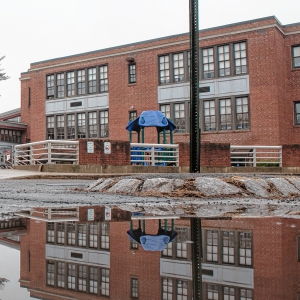 Northampton schools probe staff response to student’s unfulfilled IEP
Northampton schools probe staff response to student’s unfulfilled IEP
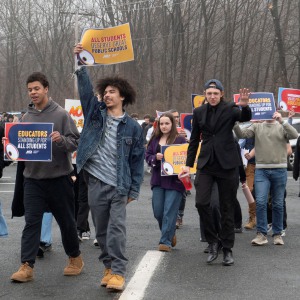 Nearly all of South Hadley High’s student body holds ‘walkout to walk-in’ rally to oppose cuts, call for funding reform
Nearly all of South Hadley High’s student body holds ‘walkout to walk-in’ rally to oppose cuts, call for funding reform
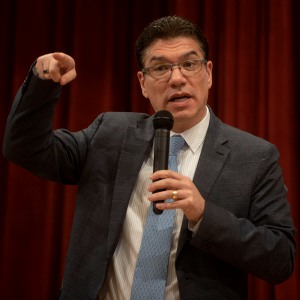 UMass Chancellor Reyes outlines changes amid financial uncertainty under Trump administration
UMass Chancellor Reyes outlines changes amid financial uncertainty under Trump administration
 Northampton Housing Authority boss placed on leave
Northampton Housing Authority boss placed on leave
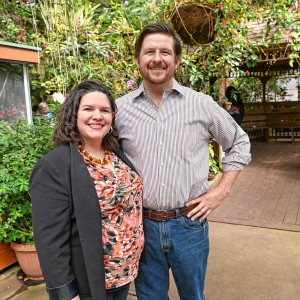 Hopeful buyers emerge for Magic Wings butterfly conservatory in South Deerfield
Hopeful buyers emerge for Magic Wings butterfly conservatory in South Deerfield
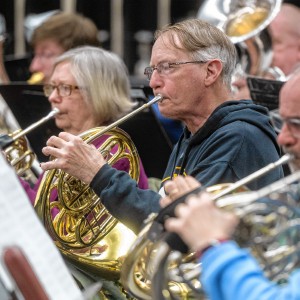 ‘For the love of music’: Florence Community Band set to hold first-ever multigenerational concert
‘For the love of music’: Florence Community Band set to hold first-ever multigenerational concert
“I’m really excited that we have something like this,” said sophomore Natalie Auerbach, observing that the only historical figure in the exhibit she had been familiar with was Frederick Douglass, the 19th century abolitionist and orator who was born into slavery. “I’m really happy that something like this exhibit is in our town.”
Bridges explained that her ancestors were on same Wye House Plantation in Maryland with Douglass, who convinced freemen to join the 54th Regiment.
“I’m really interested in how much time and effort was put into this,” said sophomore Zack Heim said.
But it also had deeper meaning for the students. Auerbach said the exhibit reflects both aspects of joy, the medals and honors, and pain.
“We’ve talked a lot about reparations and education and how that’s one of powerful things we can do in the future,” Auerbach said.
Heim, too, saw the important connections. “The gallery really humanizes the people and you feel more connected to the town — it gives me a sense of the pride in the town,” he said.
“I didn’t know it was this deep, really surprising to see, but that no Black could be leader of regiments and that none of the names show up in the textbooks.”
Heim said it’s remarkable that the Thompson brothers could return to Amherst from the war, yet be poor. “That’s disheartening, to say the least,” Heim said.
Cocco said a revised U.S. history curriculum has components focusing on the African American experience, the Indigenous experience and others whose voices aren’t often heard
“First we raise up voices that haven’t been highlighted in traditional curriculum,” Cocco said. “We look at a whole history through this lens.”
Cocco, fellow teacher Gloria Davis and their colleagues in the department redesigned the curriculum, forgoing the traditional sequential survey of U.S. history to a thematic approach, and making connections to students’ lives and current issues. The visit is part of the unit on African American history, starting in 1619 with the arrival of the first Africans in Virginia, to the present.
The tour of the exhibit was followed this week by a visit from University of Massachusetts professor Amilcar Shabazz and former Town Councilor Michele Miller, who have helped spearhead efforts for reparations in town. They explained to students what they have uncovered about the mistreatment of African Americans in Amherst, with a detailed report issued to the Town Council for recommendations on how to do reparations in the coming years.
Miller said the talk enriches youths and the community at large.
“It was very impactful to engage with our youth on the topic of reparations, particularly to speak about Amherst’s history of anti-Black racism and the reparative work we are doing to address it,” Miller said. “I was struck to consider what could be unlocked in our youth if they have the opportunity to delve into a more expanded version of Amherst’s history.”
Bridges also referred the students to the exhibit of her daughter Anika Lopes’ Ancestral Bridges Foundation at Frost Library at Amherst College, which showcases the Afro-Indigenous communities in Amherst, and to visit Hazel Avenue, Baker Street and Snell Street, designated as the Westside National Historic District. In December, a sign was put up to formally recognize the 40 acres that were once a haven for Black and Afro-Indigenous families.
Scott Merzbach can be reached at smerzbach@gazettenet.com.

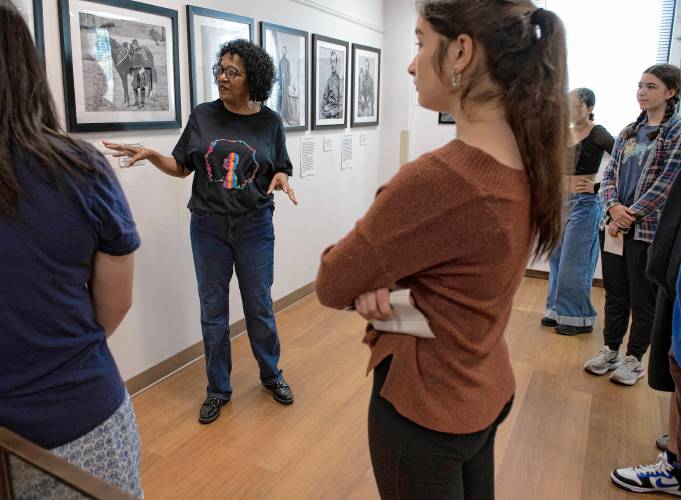

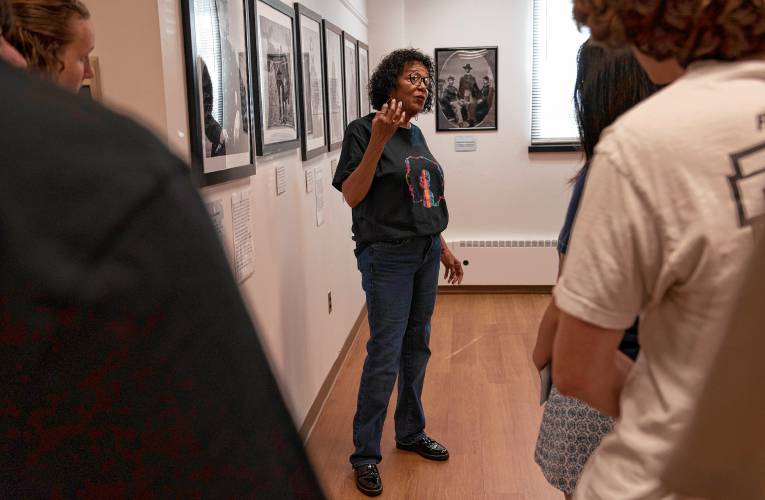
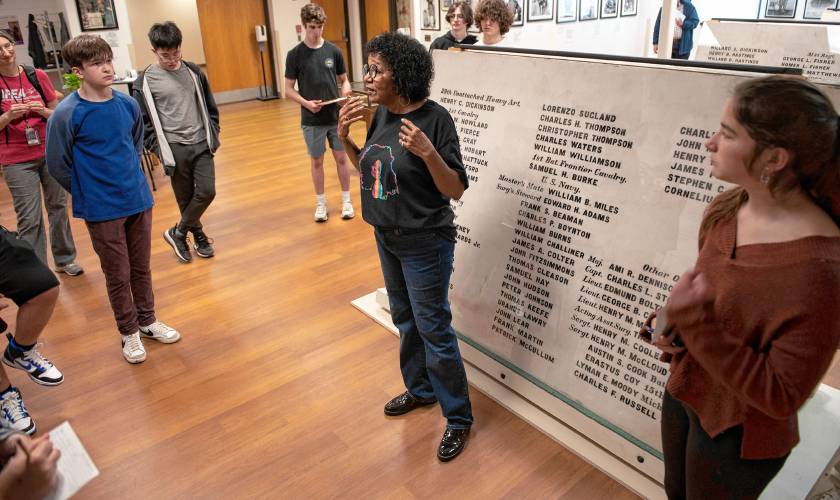
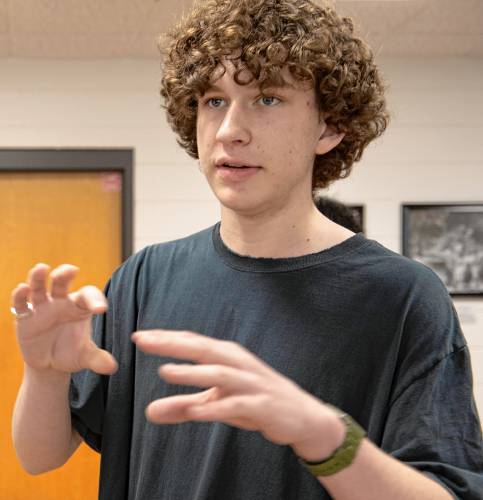
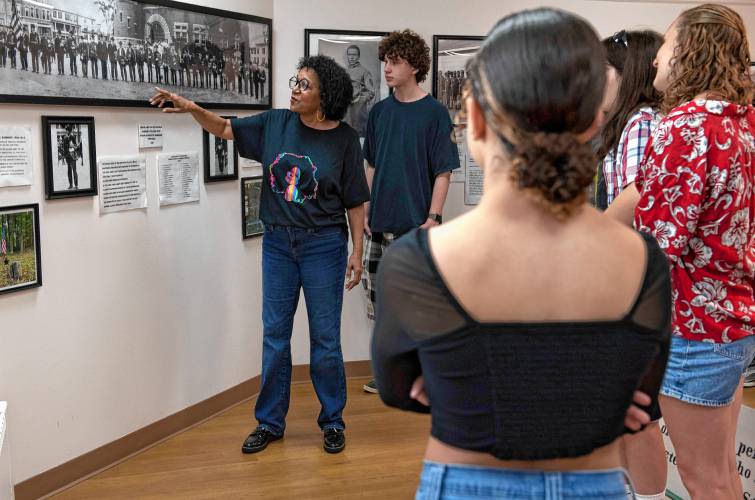
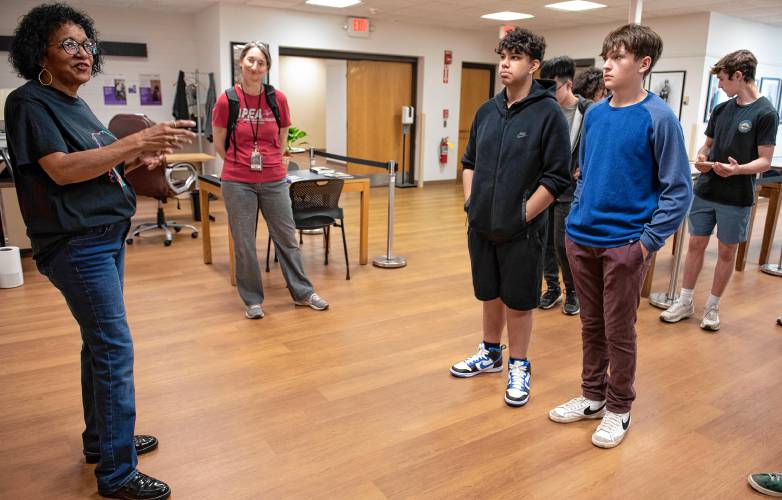





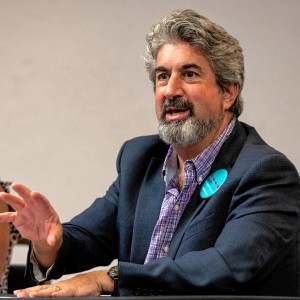 MTA president offers ways for legislators to address ‘unprecedented dangers’ to K-12 education in state
MTA president offers ways for legislators to address ‘unprecedented dangers’ to K-12 education in state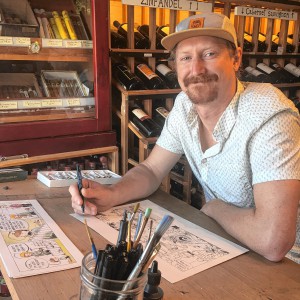 ‘Wallace the Brave’ tumbles onto Gazette comics page
‘Wallace the Brave’ tumbles onto Gazette comics page
